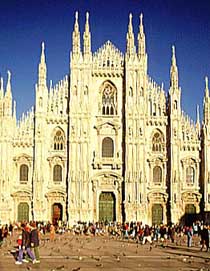DK Arts & Entertainment: Architecture
Architecture is the art of designing buildings. Architects design buildings in different shapes and sizes, from single-story garden sheds to soaring SKYSCRAPERS. The combination of form and function is vital, since buildings have to be safe as well as good-looking and suitable for their purpose.
The way a building looks depends on several factors: its purpose, its particular architectural style, and the materials and technology available. Domestic buildings, corporate offices, and sacred architecture, for example, have entirely different functions that are reflected in their size, form, and content.
Sustainable buildings aim to be environmentally friendly. The construction and running of buildings causes pollution and uses up energy and resources. Buildings made with renewable materials, nontoxic paints, solar panels, good insulation, and even toilets that use less water all help to preserve the planet.
A client tells the architect about the type of building they want and how much they can pay. The architect then makes designs, and works out detailed technical drawings, often using computer programs. Engineers check the plans and any models to make sure that the building will be structurally sound.
Traditional building materials are stone, wood, brick, and concrete. However, as technology develops, so do new materials. Steel and glass are commonly used. Fabrics are created by coating fiberglass with a durable plastic such as Teflon to make a membrane (skin) that can be attached to a steel framework.
The architecture of the ancient Greeks and Romans, which was based on balanced, harmonious proportions, is known as classical architecture. It has had a huge influence on the history of Western architecture. Some modern architects still use elements of the classical tradition today.
The term skyscraper became popular in the US in the 1880s to describe a new type of tall office building in Chicago and New York City. They rose up to 12 stories, a startling height at the time.
Buildings could only rise as high as about 250 ft (75 m) until the invention of steel-frame construction. In 1998, Chicago’s Sears Tower—at 1,450 ft (442 m) the world’s tallest building since 1974—was overtaken by Petronas Towers in Kuala Lumpur, Malaysia, which stands at 1,483 ft (452 m).


